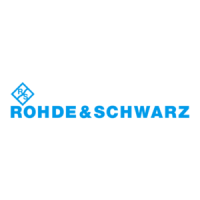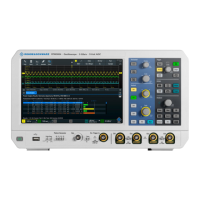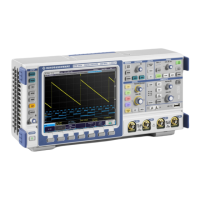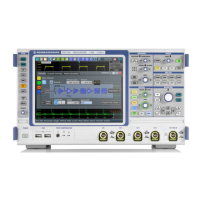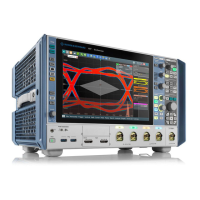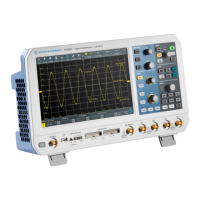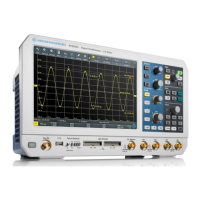Applications
R&S
®
RTM3000
165User Manual 1335.9090.02 ─ 09
9 Applications
All available applications are provided in the "Apps Selection" dialog.
►
To select an application, press the
[Apps Selection] key.
See also: Chapter 4.2, "Selecting the application", on page 36.
Applications are grouped on several tabs:
●
Applications, see below
●
Protocol
Protocol applications are described in Chapter 13, "Serial bus analysis",
on page 250.
●
Track
On the "Applications" tab, the following applications are available:
●
"QuickMeas": see Chapter 8.1, "Quick measurements", on page 146
●
"Probe Adjust": see Chapter 5.4.1, "Adjusting passive probes", on page 61
●
"Function Gen.": see Chapter 16.1, "Function generator", on page 401
●
"Pattern Gen.": see Chapter 16.2, "Pattern generator", on page 413
● Mask testing..........................................................................................................165
● FFT analysis..........................................................................................................173
● Spectrum analysis and spectrogram (option R&S RTM-K18)...............................181
● Spectrum analysis and spectrogram (option R&S RTM-K37)...............................191
● XY-Diagram...........................................................................................................201
● Digital voltmeter.................................................................................................... 203
● Trigger counter......................................................................................................205
● Bode plot (option R&S RTM-K36).........................................................................206
9.1 Mask testing
Masks are used to determine whether the amplitude of a signal remains within speci-
fied limits, e.g. to detect errors or test compliance of digital signals.
9.1.1 About masks and mask testing
Masks
A mask is specified by an upper and a lower limit line. The signal must run inside these
limit lines, otherwise a mask violation occurs.
A new mask is created from an existing signal: Mask limits are created by copying the
envelope waveform, and the limits are moved and stretched. The result is a tolerance
tube around the signal that is used as mask.
Mask testing

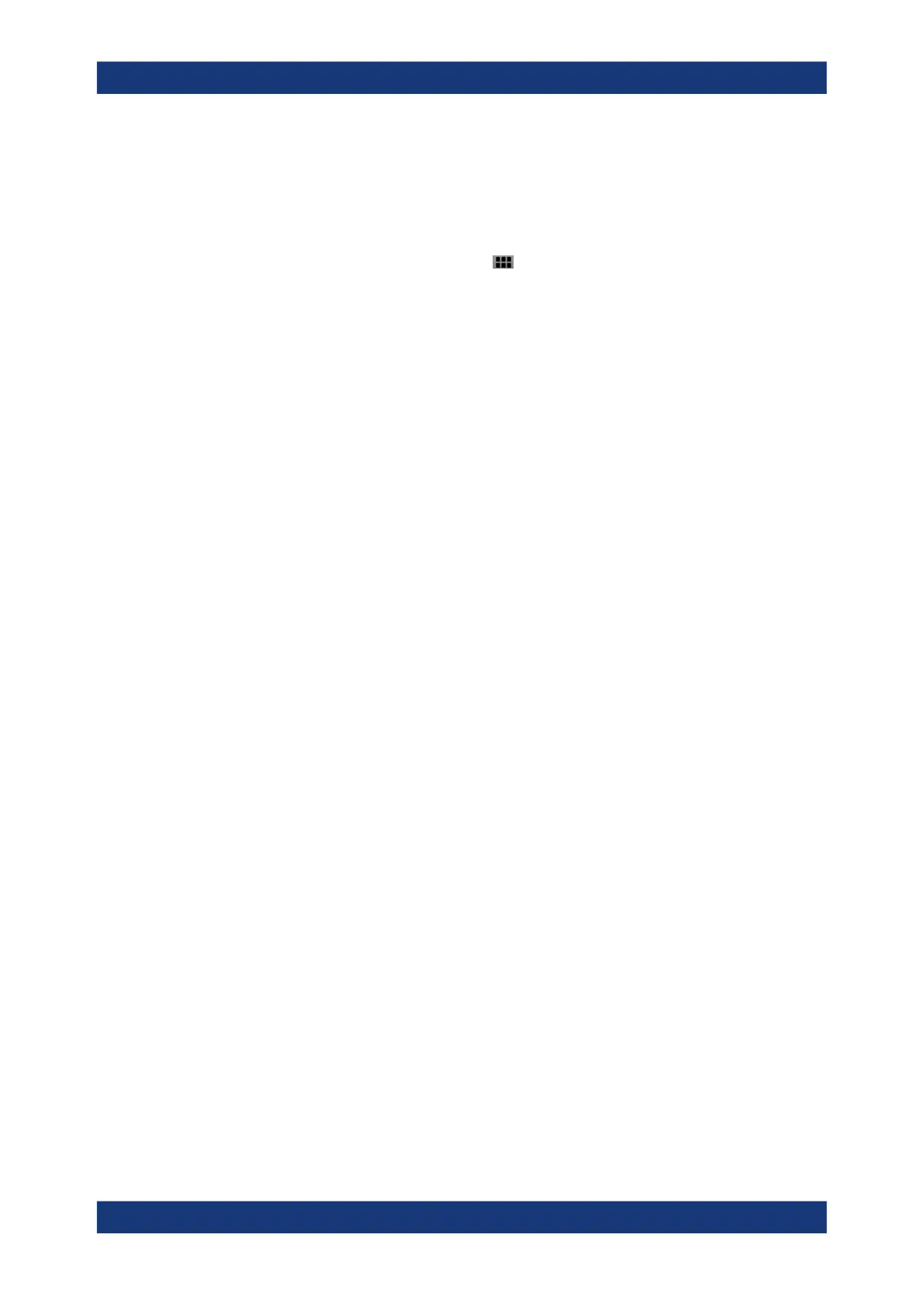